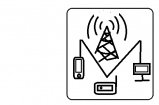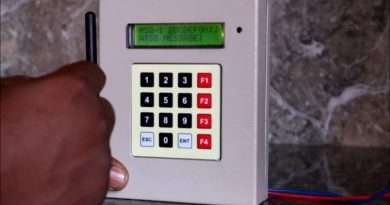Mobile network technologies GSM/GPRS/UMTS/LTE
https://mobilepacketcore.teachable.com/p/learn-2g-3g-4g-lte-packet-core-network
Mobile network technologies GSM/GPRS/UMTS/LTE
Mobile network technologies has evolved over time to satisfy the increasing customer needs for higher data rates and better services.
In brief, the Mobile Station you are having should be able to make voice calls, in addition to data sessions.
The voice calls in the mobile network are using the Circuit switching ‘CS’ domain. while the data sessions are using the Packet Switching ‘PS’ domain.
3GPP organization
In order to understand different mobile network technologies, let’s take a quick overview on the organization that developed those technologies.
3GPP is the organization that manages and develops mobile network standards. Those standards cover all aspects of mobile networks.
GSM/GPRS mobile network
In 1997, 3GPP introduced release 96 of the standards. In this release, the ‘GSM’ technology existed .
GSM had only a CS domain that pass voice calls. while it didn’t support data sessions.
Therefore, in 1998, 3GPP introduced release 97 of the standards, in which network architecture enhanced to support data sessions.
This is done by introducing GPRS (General Packet Radio Service), which contains a PS domain to pass data sessions.
To sum up, the ‘core network’ term describe the combination of the CS domain and the PS domain in mobile network.
The mobile station connects to the core network through the ‘access network’, which controls the communication between the mobile station and the core network.
The access network name in GPRS is ‘GERAN’, which refer to (GSM EDGE Radio Access Network).
In fact, this whole network that contains the access network and the core network forms the 2nd generation network, or ‘2G network’.
UMTS mobile network
In order to afford higher data rates and better utilization for network resources, 3GPP introduced release 99 of the standards. And this was in year 2000. In this release, the 3rd Generation (3G) network existed.
UMTS (Universal Mobile Telecommunication System). In fact this is the term used as an umbrella for the third generation technologies.
UMTS is having both a CS domain for voice calls, in addition to a PS domain for data sessions. The core network of UMTS is inherited from GSM GPRS network.
Actually, the access network for the 3G network is the UTRAN. Which refers to (Universal Terrestrial Radio Access Network).
‘GPRS’ term
In fact, GPRS afforded PS service to mobile networks. therefore, you may find it mentioned in two different manners.
• GPRS a long with UMTS.
This means GPRS refers to 2G network, while UMTS refers to 3G network.
• GPRS a lone.
in this case it refers to PS service in both 2G and 3G networks. this is because the core network in UMTS is inherited from GSM/GPRS network.
LTE mobile network
After that, 3GPP introduced release 8 in year 2008. In this release, (Long Term Evolution) LTE existed. It is the 4th Generation (4G) network.
Unlike previous generations, LTE network is having only a PS domain in the core network, while it doesn’t have a CS domain for voice calls.
The mobile station can make voice calls by connecting to an external network, which is the IMS network.
The mobile station connects to the IMS network through the PS domain.
in addition , the PS domain architecture enhanced and named the ‘Evolved Packet Core’, (EPC).
The access side of the LTE network is the E-UTRAN. which refers to Evolved-UTRAN.
In later 3GPP standards, release 14 and 15. 3GPP introduced new technologies , like Internet of Things IoT, and 5th Generation 5G network.
Conclusion
Mobile networks evolved over time to afford better services.
First came the 2G network which is the GSM GPRS architecture, which containes a CS domain for voice calls, and a PS domain for data sessions. Then came the 3rd generation network UMTS. UMTS inherited its core from the GSM/GPRS architecture. Therefore, GPRS term can be used to call the PS domain in both 2G and 3G networks. After that came the 4G network, which is the LTE. The LTE network containes only a PS domain which is the evolved packet core ‘EPC’.
Thank you !
Views : 59224
GSM




